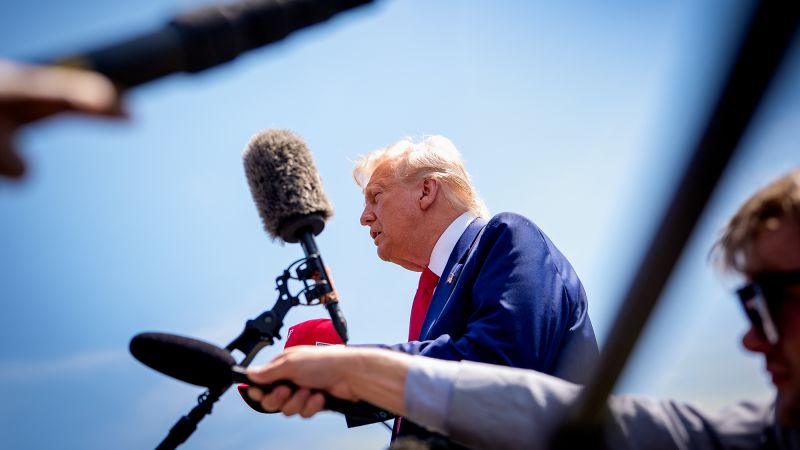The Trump administration frequently emphasized its claim to be “the most transparent” administration in history. However, some recent actions have raised questions about this assertion, specifically concerning the removal of a database of official transcripts that documented President Donald Trump’s public comments. This change is significant as it represents a shift away from long-standing practices of transparency regarding the communication between a president and the public.
One of the most notable alterations can be seen on the White House website, where the section that traditionally housed formal transcripts—often referred to as the “remarks” section—has been replaced with YouTube video links. Historically, past administrations have published comprehensive transcript records, allowing citizens, researchers, and journalists to access the official words of their leaders. Instead of maintaining this tradition, the Trump White House has opted to showcase selected videos, which leads to a partially incomplete and curated narrative of Trump’s public remarks, especially since the current collection features fewer than 50 videos from the first 120 days of his second term.
This selective dissemination reflects a broader trend of the Trump administration exerting more control over information flow. Rather than disseminating all official records, the White House appears to be managing and publicizing a narrower selection of events, thereby limiting the variety of perspectives available to the public about presidential occurrences. Additionally, previous official communications, such as White House press briefing transcripts, seem to have also been neglected, with the most current edition being the transcript from the very first briefing conducted by Press Secretary Karoline Leavitt in January.
These actions carry significant implications for transparency. While the average taxpayer might not immediately notice the absence of these transcripts, the impact is pronounced for journalists and researchers who rely on these documents for accountability and information. The ability to search through written records of a president’s comments is an essential tool in evaluating the administration’s actions and policies.
The situation worsened when it was reported that the White House was not only limiting the availability of transcripts but also deliberately excluding some of Trump’s more controversial statements from the record. This notion was highlighted when HuffPost senior White House correspondent S.V. Date pointed out the reduction of transcripts. In a rather dismissive response to the criticism, Communications Director Steven Cheung advised Date to “stop beclowning yourself,” illustrating the often-contentious relationship between the administration and the press.
Moreover, the removal of these transcripts has serious implications beyond just limited access to information. It reflects the Trump administration’s prioritization of visual engagement over traditional textual documentation. The videos may seem accessible, but not all remarks are captured in this format, meaning vital dialogues and responses are lost. Such a reality possibly limits thorough public scrutiny of the president’s remarks and policies.
In the context of Joe Biden’s administration, it is evident that previous misunderstandings on the importance of accurate transcript management were acknowledged when attempts were made to amend a transcript that represented comments made about Trump supporters. The removal of Trump’s transcripts thus gives insight into the administration’s priorities, where “transparency” might more aptly be characterized as a form of controlled “visibility.” The Trump administration appears to focus heavily on imagery that conveys strength and dominance, often at the expense of detailed, comprehensive records of verbal communications.
In light of the transparency claims from the Trump administration, Press Secretary Karoline Leavitt still maintained that “the president’s remarks are live on the website for every person in the world, including journalists, to access and watch for themselves.” While indeed live streams of Trump’s comments exist, the narratives that can be derived from written transcripts remain largely invaluable and irreplaceable.
The implications of the transcript purge underscore the necessity of independent records of presidential statements, a sentiment echoed by Bill Frischling, the founder of the database Factba.se. He emphasizes that the unfiltered record is crucial for democracy and accountability. The challenges and tensions with traditional record-keeping highlight an ongoing dynamic between the scope of public information and the administration’s approach to communication and truth.



